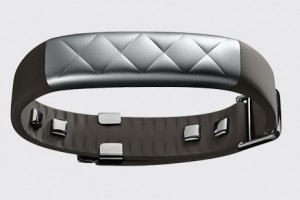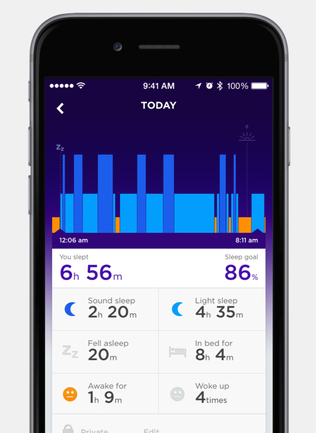 Jawbone UP3
Jawbone UP3
A pair of (worthwhile but lengthy) features running in Fortune and Forbes this week offered up an in-depth look at 16-year-old health and fitness tracking company Jawbone, makers of the UP line of wearable wristbands. Fortune chronicled Jawbone's transformation from a Bluetooth earpiece device maker, to big name wireless speaker company, to a leading fitness tracker maker. The company still offers products in all three categories, but has focused mostly on health tracking and behavior change in the past few years. Jawbone has raised more than $400 million since its founding and has a valuation of well over $3 billion.
"For all its accomplishments, though, Jawbone remains on the verge. It is no closer to making money today—with 450 employees and hundreds of millions in revenue—than it was more than a decade ago, when it was scraping by on government grants. Execution misses and slow-footed strategic moves have left Jawbone vulnerable to disciplined competitors, including the surging Fitbit. Indeed, despite all the money it has raised and its patina of success, Jawbone continues to scramble for cash and struggles to ship a quality product on time. And that’s all before Apple itself pounces on the wearables market with its eagerly awaited Apple Watch," Fortune reports.
The publication also notes that market leader Fitbit, which has only raised $66 million to date, is widely expected to go public this year.
Jawbone now refers to its wearable as a "24-hour context engine" since users are "engaged" with their UP device for about 23 hours a day, which the company likes to point out is much more than Facebook's 15 minutes a day. Here's another interesting passage from Fortune that sheds some light on how Jawbone is beginning to capitalize on that kind of engagement:
 "Jawbone has devised ingenious content to go with its app that truly prods users to eat better, exercise more, and pay more attention to the quality of their sleep. This content, in turn, offers opportunities for big brands to pay Jawbone to reach its active users, which number, Rahman says, in the 'many millions'. Quaker Oats and skin-care-products maker Lab Series, for example, have paid to include messages in Jawbone’s app, which Rahman calls 'brand activation' content rather than advertising."
"Jawbone has devised ingenious content to go with its app that truly prods users to eat better, exercise more, and pay more attention to the quality of their sleep. This content, in turn, offers opportunities for big brands to pay Jawbone to reach its active users, which number, Rahman says, in the 'many millions'. Quaker Oats and skin-care-products maker Lab Series, for example, have paid to include messages in Jawbone’s app, which Rahman calls 'brand activation' content rather than advertising."
Forbes' reporting didn't touch on Jawbone's advertising strategy specifically, but it may hint at it: "Jawbone will soon be taking data from other apps you use on your phone, like Netflix, to experiment with automated nudges, such as suggesting you watch Modern Family before going to bed because you slept 57 minutes more than when you watched the premiere of The Walking Dead."
Fortune also noted three setbacks that Jawbone had to overcome last year. One: Early in the year an expected $250 million investment from investors affiliated with Rizvi Traverse came up short, forcing Jawbone to "scramble yet again to raise new funds". Two: Last summer Jawbone's contract manufacturer, Flextronics, sued the company because Jawbone's "perilous" financial position prevented the company from paying its $20 million tab. The suit settled quietly soon after. Three: Finally, at the very end of 2014, Jawbone announced that its UP3 would not ship by year-end as previously promised. The device suffered from a "sealing" problem. The company gave customers who had preordered it a $40 discount.
Read the full, in-depth Fortune article here and the Forbes piece on behavior change and A/B testing here.













